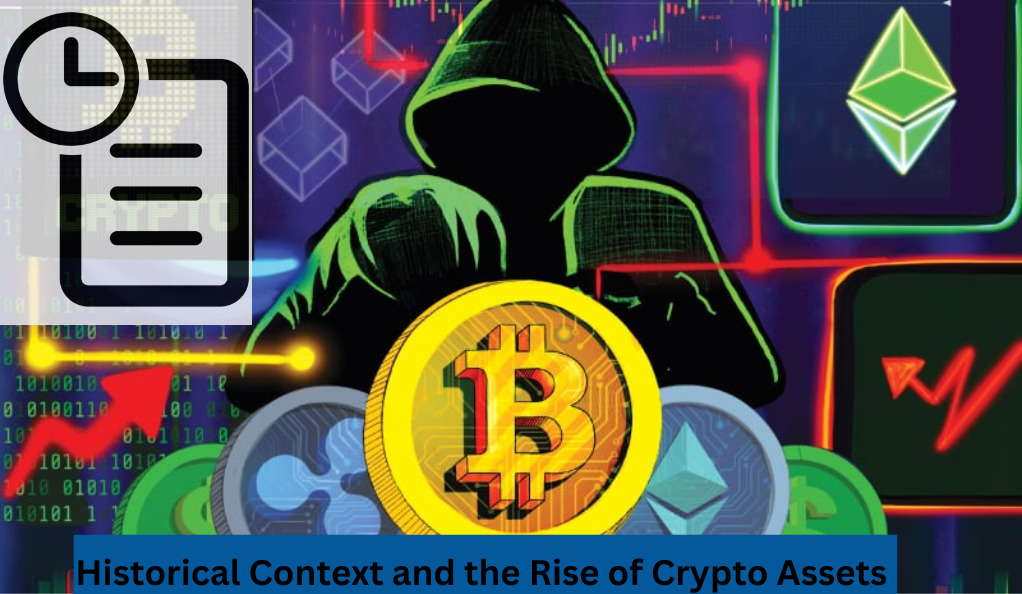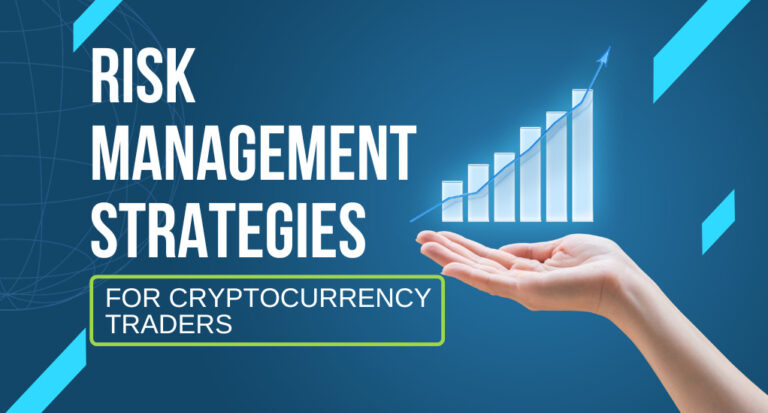In recent years, the financial landscape has witnessed the burgeoning growth of crypto assets, a development that has not only piqued the interest of investors but also regulatory bodies worldwide. The allure of decentralized finance (DeFi) and the potential for a new financial paradigm have driven a significant influx of investments into cryptocurrencies and other crypto assets. However, this rapid growth has also given rise to a plethora of concerns, necessitating a discussion on the prudential treatment of these novel financial entities.
The Advent of Crypto Assets

The inception of Bitcoin in 2009 marked the dawn of a new era in finance, introducing the world to the potential of blockchain technology. Over the subsequent decade, the crypto space has evolved exponentially, with thousands of cryptocurrencies and other crypto assets coming into existence. These assets, though diverse in their functionalities and purposes, share a common trait of leveraging cryptographic and blockchain technologies to enable a decentralized, transparent, and immutable system of transactions.
The market capitalization of crypto assets has soared, reaching new all-time highs. While the crypto asset market remains relatively small compared to the global financial system, its absolute size is meaningful. The estimated market capitalization of some of these assets has recently reached new all-time highs, indicating a growing interest and investment in this sector.
Concerns and Risks
The rapid proliferation of crypto assets has given rise to a range of concerns including consumer protection, money laundering, terrorist financing, and their carbon footprint. The volatility inherent in the crypto market, coupled with the lack of a centralized regulatory framework, poses significant risks. These include liquidity risk, credit risk, market risk, operational risk (including fraud and cyber risks), money laundering/terrorist financing risk, and legal and reputation risks.
The potential for crypto assets to disrupt the traditional financial ecosystem has also garnered attention from a broad range of stakeholders. The decentralized nature of crypto assets, while being one of its most significant advantages, also presents challenges in terms of regulatory oversight and consumer protection.
The Need for Prudential Treatment
Given the potential risks and the rapid developments in the crypto asset market, there’s a pressing need for a prudential treatment to ensure financial stability and consumer protection. The Basel Committee on Banking Supervision has taken steps to address these risks by publishing consultative documents on the prudential treatment of crypto asset exposures. The aim is to establish a framework that ensures that the same risks associated with traditional assets will have the same capital, liquidity, and other requirements when it comes to crypto assets.
The prudential treatment of crypto assets is guided by several principles including ensuring that the same risk, same activity, and same treatment principle is applied to crypto assets as it is to traditional assets. This approach is aimed at ensuring that the regulatory framework is technology-neutral and does not explicitly advocate or discourage the use of specific technologies related to crypto assets.
The Evolution of Crypto Assets
The world of finance has always been dynamic, but the last decade has seen a revolution unlike any other with the emergence of crypto assets. Their evolution has been nothing short of meteoric, reshaping the way we perceive and interact with money and value.
Historical Context and the Rise of Crypto Assets

The story of crypto assets began with Bitcoin, a decentralized digital currency introduced by an anonymous entity known as Satoshi Nakamoto in 2009. Designed as a peer-to-peer system for online transactions, Bitcoin’s underlying technology, the blockchain, became the foundation for a myriad of other digital assets.
Over the years, the crypto landscape expanded beyond Bitcoin. Ethereum introduced the concept of smart contracts, allowing for programmable transactions. This innovation paved the way for the creation of decentralized applications (DApps) and the tokenization of assets, leading to the rise of Initial Coin Offerings (ICOs) as a novel fundraising mechanism.
Market Capitalization and Significance
The financial significance of crypto assets cannot be understated. From a modest beginning, the total market capitalization of all cryptocurrencies has surged into the trillions of dollars, rivaling some of the world’s most established financial markets.
Several factors have contributed to this growth:
- Mainstream Adoption: Major financial institutions, tech companies, and retailers have started to integrate crypto assets into their operations, either by offering crypto-related services or accepting them as a form of payment.
- Institutional Investment: Hedge funds, asset managers, and other institutional investors have begun allocating a portion of their portfolios to crypto assets, signaling a shift in perception from speculative assets to legitimate investment vehicles.
- Technological Advancements: Continuous innovations in blockchain technology have led to faster transaction speeds, enhanced security measures, and the development of more sophisticated and diverse crypto assets.
Classification of Crypto Assets
Understanding the diverse landscape of crypto assets requires a systematic approach to classification. By categorizing these assets based on their inherent characteristics and functionalities, stakeholders can better navigate the complexities of the crypto ecosystem and make informed decisions.
Group 1 Crypto Assets: Tokenized Traditional Assets and Stabilization Mechanisms
Tokenized Traditional Assets: These are digital representations of conventional assets on a blockchain. By tokenizing real-world assets like real estate, stocks, or commodities, they can be easily traded, divided, and managed on digital platforms. Examples include tokenized gold or real estate-backed tokens.
Stablecoins: A subset of tokenized assets, stablecoins are designed to maintain a stable value by pegging them to traditional currencies or other assets. Examples include USDC (pegged to the US Dollar) and DAI (a decentralized stablecoin that maintains its value through smart contracts).
Group 2 Crypto Assets: Those that do not qualify as Group 1
This group encompasses a wide range of crypto assets that don’t fit the mold of traditional tokenized assets. They include:
Cryptocurrencies: Digital or virtual currencies that use cryptography for security and operate independently of a central authority. Bitcoin and Litecoin are prime examples.
Utility Tokens: These tokens provide users with access to a product or service. For instance, the Ethereum network’s Ether (ETH) can be used to execute smart contracts on the platform.
Security Tokens: Digital tokens that derive their value from an external asset or entitlement and are subject to federal securities regulations. They represent ownership in a company or asset, much like traditional stocks.
Non-Fungible Tokens (NFTs): Unique digital tokens that represent ownership of a specific item or piece of content. Unlike cryptocurrencies such as Bitcoin or Ethereum, which are fungible and can be exchanged on a one-for-one basis, NFTs are distinct and cannot be exchanged on a like-for-like basis.
Criteria for Classification
The classification of crypto assets is based on several criteria:
- Purpose: What is the primary use of the asset? Is it meant for transactions, investments, access to a service, or representing ownership?
- Underlying Value: Does the asset have an intrinsic value or is it pegged to an external asset?
- Regulatory Status: How do regulatory bodies view the asset? Is it considered a currency, security, commodity, or something else?
- Technological Foundation: What kind of blockchain or distributed ledger technology does the asset use? Is it public, private, or hybrid?
Prudential Treatment: A Deep Dive
As the crypto ecosystem continues to evolve, the need for a structured and comprehensive prudential treatment becomes paramount. This section delves into the intricacies of prudential regulations, highlighting the measures in place to ensure the stability and integrity of the financial system in the face of the burgeoning growth of crypto assets.
Capital Requirements for Crypto Assets
Group 1 Crypto Assets: Given their closer resemblance to traditional financial assets, Group 1 crypto assets often have capital requirements similar to those of conventional assets. Financial institutions dealing with these assets must maintain a capital buffer to absorb potential losses, ensuring that they remain solvent even in adverse market conditions.
Group 2 Crypto Assets: Due to their inherent volatility and the risks associated with them, Group 2 crypto assets typically attract more stringent capital requirements. Regulatory bodies often mandate higher capital buffers for these assets to account for their unpredictable nature and the potential for significant financial downturns.
Addressing Risks in the Crypto Space
Liquidity Risk: Given the volatile nature of crypto markets, there’s a potential for assets to become illiquid rapidly. Financial institutions must maintain a diversified portfolio and have measures in place to quickly convert assets to cash or other liquid forms.
Credit Risk: As with traditional finance, there’s a risk that parties involved in a transaction may default on their obligations. Institutions must conduct thorough due diligence and have robust credit risk management strategies.
Market Risk: The value of crypto assets can fluctuate significantly within short time frames. To mitigate this, institutions should employ advanced risk modeling techniques and maintain a diversified asset portfolio.
Operational Risk: This encompasses risks arising from system failures, cyber-attacks, fraud, and other operational issues. Ensuring robust cybersecurity measures, regular system audits, and employee training are crucial.

Role of Banks and Supervisors in Risk Management
Banks play a pivotal role in the prudential treatment of crypto assets. They are at the forefront of integrating these assets into the traditional financial system and, as such, must adopt best practices to manage associated risks. This includes:
- Due Diligence: Before engaging in crypto-related activities, banks should conduct comprehensive due diligence to understand the risks and potential implications fully.
- Risk Management Framework: Banks should have a robust risk management framework tailored to the unique challenges posed by crypto assets. This includes setting clear risk appetite thresholds and ensuring regular monitoring and reporting.
- Transparency: Banks should provide clear and comprehensive disclosures to their stakeholders, including their exposure to crypto assets and the measures in place to manage associated risks.
Regulatory Requirements and Compliance
As crypto assets gain prominence in the global financial landscape, the necessity for a comprehensive regulatory framework becomes increasingly evident. This section delves into the regulatory requirements and compliance measures that are being established to ensure the safe and responsible growth of the crypto sector.
Leverage Ratio, Large Exposures, and Liquidity Ratios
Leverage Ratio: This metric is designed to ensure that financial institutions maintain a minimum level of capital relative to their total assets, including crypto assets. A higher leverage ratio indicates a more significant capital buffer, reducing the potential risks associated with crypto asset investments.
Large Exposures: Regulatory bodies are increasingly concerned about financial institutions having a significant concentration of crypto assets. To mitigate systemic risks, limits are often set on the exposure that banks can have to a single counterparty or a group of connected counterparties in the crypto space.
Liquidity Ratios: Given the volatile nature of crypto markets, it’s crucial for financial institutions to maintain adequate liquidity. Regulatory requirements often mandate specific liquidity ratios, ensuring that banks can meet their short-term obligations even in adverse market conditions.
Disclosure Requirements for Banks
Transparency is a cornerstone of trust in the financial world. As such, banks and other financial institutions involved in crypto activities are often required to:
- Disclose their Crypto Asset Exposures: This includes the types of crypto assets held, their valuation methods, and the risks associated with them.
- Provide Regular Reports: Periodic reporting on crypto activities, including profits, losses, and risk management strategies, is crucial for stakeholders to make informed decisions.
- Highlight Potential Risks: Banks should proactively inform their stakeholders about the potential risks associated with crypto investments, ensuring that they are well-informed before making decisions.
Challenges in Crypto Asset Management
The integration of crypto assets into the mainstream financial system, while promising, is not without its hurdles. This section delves into the challenges faced by institutions and individuals alike in managing crypto assets, highlighting the complexities and potential pitfalls in this rapidly evolving landscape.
Volatility and Inherent Risks
One of the most prominent challenges in the crypto world is its notorious volatility. Prices of crypto assets can swing dramatically within short time frames, leading to:
- Market Uncertainty: Rapid price fluctuations can deter potential investors and create apprehension among existing stakeholders.
- Liquidity Concerns: Extreme volatility can lead to sudden market crashes, making it challenging for investors to liquidate their holdings without incurring significant losses.
Legal and Reputation Risks
The decentralized and often anonymous nature of crypto transactions has raised concerns regarding:
Regulatory Ambiguity: The legal status of crypto assets varies across jurisdictions, leading to uncertainties for global investors and institutions.
Potential Misuse: The anonymity of certain crypto transactions can be exploited for illicit activities, such as money laundering or financing terrorism, posing reputation risks for platforms and exchanges.
The Future of Crypto Assets and Regulatory Landscape
As we venture further into the digital age, the trajectory of crypto assets and their integration into the global financial framework becomes a topic of paramount importance. This section explores the potential future of crypto assets and how the regulatory landscape might evolve to accommodate this burgeoning sector.

The Iterative Process of Policy Development
Given the dynamic nature of the crypto ecosystem, regulatory policies will need to be iterative, adapting to the ever-changing landscape. This involves:
- Regular Reviews: Regulatory bodies should conduct periodic reviews of existing policies, ensuring they remain relevant and effective.
- Stakeholder Collaboration: Engaging with crypto platforms, financial institutions, and the broader community will provide regulators with diverse perspectives, aiding in the formulation of balanced policies.
- Pilot Programs: Before rolling out extensive regulations, pilot programs can be initiated to test the efficacy of proposed policies in real-world scenarios.
Coordination with International Organizations
The global nature of crypto assets necessitates international collaboration. Efforts in this direction might include:
Unified Regulatory Frameworks: Collaborative efforts between countries to establish unified regulatory standards can reduce ambiguities for global investors and platforms.
Information Sharing: Countries can share insights, research, and data on crypto trends, threats, and opportunities, fostering a collective understanding of the sector.
Joint Enforcement Actions: In cases of cross-border crypto fraud or illicit activities, countries can collaborate for joint enforcement actions, ensuring culprits are brought to justice.
Conclusion
The transformative power of crypto assets is undeniable, signaling a paradigm shift in the financial world. As we stand at this pivotal juncture, the fusion of traditional finance with the dynamic world of cryptocurrencies offers both challenges and unparalleled opportunities. Embracing this change requires a harmonious blend of education, regulation, and innovation. By fostering a collaborative and informed approach, we can navigate the complexities of this new era, ensuring a future where financial systems are more inclusive, transparent, and efficient.
In the coming years, the crypto landscape will undoubtedly continue to evolve, reshaping the way we perceive and interact with money. As individuals, institutions, and nations, our ability to adapt and grow with these changes will determine our place in the next chapter of global finance. The journey may be fraught with uncertainties, but the potential rewards — a democratized financial ecosystem and a world where technology empowers financial freedom — are well worth the endeavor.
At axerunners.com, our goal is to furnish well-rounded and trustworthy information regarding cryptocurrency, finance, trading, and stocks. Nonetheless, we avoid providing financial advice and instead encourage users to conduct their own research and meticulous verification.
Read More













